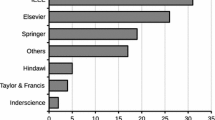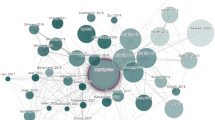Abstract
With the development of large-scale hydrologic modeling, computational efficiency is becoming more and more important. Rapid modeling and analysis are needed to deal with emergency environmental disasters. The Soil and Water Assessment Tool (SWAT) is a popular hydrologic model, which is less applied in large-scale watershed simulation because of its sequential characteristics. For improving the computational efficiency of the SWAT model, we present a new parallel processing solution for hydrologic cycle and calibration based on MPI (Message Passing Interface). We partitioned sub-basins during the processes based on a load balancing method. Then the calibration was parallelized using a master-slave scheme, in which different input parameters were allocated to different processes to run the hydrologic cycle and compute the function value. Because of the slow convergence and local optimization of the SCE-UA (Shuffled Complex Evolution-developed by University of Arizona) algorithm in SWAT calibration, a genetic algorithm (GA) is developed to optimize the calibration step. Then by dividing the default communicator into several sub-communicators, all the hydrologic cycles were parallelized in their own sub-communicators to achieve further acceleration. In this paper the results show speedups for the hydrologic cycle calculations, as well as in the optimized calibration step. In the case study, we tested the parallel hydrologic cycle by four processes, and got a speedup of 3.06. In the calibration section, after applying the GA optimization, with 10 cores, we got a speed increase of 8.0 in our GA parallel framework compared with the GA sequential calibration, which is much better than the original SWAT calibration. After the sub-communicators added, this process was speeded up even further. The study demonstrated that the GA parallel framework with multi-sub-communicators is an effective and efficient solution for the hydrologists in large scale hydrology simulations.
Similar content being viewed by others
References
Arnold J G, Srinivasan R, Muttiah R S, et al. 1998. Large area hydrologic modeling and assessment part 1: model development. Journal of the American Water Resources Association, 34(1): 73–89.
Barbara C, Gabriele J. 2008. Using OpenMP: Portable Shared Memory Parallel Programming. Cambridge: MIT Press, 79–152.
Bacu V, Mihon D, Rodila D, et al. 2011. Grid based architectural components for SWAT model calibration, In: 2011 International Conference on High Performance Computing and Simulation (HPCS), Istanbul, 193–199.
Dai S S, Li L H, Xu H G, et al. 2013. A system dynamics approach for water resources policy analysis in arid land: a model for Manas River Basin. Journal of Arid Land, 5(1): 118–131.
Denisa R, Victor B, Dorian G. 2012. Comparative parallel execution of SWAT hydrological model on multicore and grid architectures. International Journal of Web and Grid Services, 8(3): 304–320.
Duan Q Y, Sorooshian S, Gupta V. 1992. Effective and efficient global optimization for conceptual rainfall-runoff models. Water Resources Research, 28(4): 1015–1031.
Duan Q Y, Gupta V K, Sorooshian S. 1993. A shuffled complex evolution approach for effective and efficient global minimization. Journal of Optimization Theory and Applications, 76(3): 501–521.
Duan Q Y, Sorooshian S, Gupta V. 1994. Optimal use of the SCE-UA global optimization method for calibrating watershed models. Journal of Hydrology, 158(3): 265–284.i
George K. 1997. Efficient subspace probabilistic parameter optimization for catchment models, Water Resources Research, 3(1): 177–185.
Gropp W, Lusk E, Skjellum A. 1994. Using MPI: Potable Parallel Programming with the Message-passing Interface. Cambridge: MIT Press, 51–108.
Ilya M D, Jonathan J B, Amanda J S. 2012. A high-resolution model of soil and surface water conditions. Ecological Modeling, 237: 109–119.
Li L, Simonovic S P. 2002. System dynamics model for predicting floods from snowmelt in North American prairie watersheds. Hydrological Processes. 16(13): 2645–2666.
Li L, Yakupitiyage A. 2003. A model for food nutrient dynamics of semi-intensive pond fish culture. Aquacultural Engineering, 27(1): 9–38.
Li T J, Wang G Q, Chen J, et al. 2011. Dynamic parallelization of hydrological model simulations. Environmental Modeling & Software, 26(12): 1736–1746.
Liong S Y, Gautam T R, Khu S T, et al. 2002. Genetic programming: a new paradigm in rainfall runoff modeling. Journal of American Water Resources Association, 38(3): 705–718.
Lu Z X, Cai X H, Zou S B, et al. 2012. Application of SWAT model in the upstream of Ili River Basin with Scarce Data. Arid Land Geography, 35(3): 399–407. (in Chinese)
Rouholahnejad E, Abbaspour K C, Vejdani M, et al. 2011. Parallelizing SWAT calibration in windows using SUFI2 program. Environmental Modelling and Software, 31: 28–36.
Savic D A, Walters G A, Davidson J M. 1999. A genetic programming approach to rainfall-runoff modeling. Water Resources Management, 13(3): 219–231.
Sharma V, Swayne D C, Lam W, et al. 2006. Auto-calibration of hydrological models using high performance computing. In: High-Performance Computing in an Advanced Collaborative Environment, 2006. HPCS 2006. 20th International Symposium on Source: IEEE Xplore.
Neitsch S L, Arnold J G, Kiniry J R, et al. 2005. Soil and Water Assessment Tool Theoretical Documentation Version 2005. Taxas: Texas Water Resources Institute.
Wang H, Fu X D, Wang G Q, et al. 2011. A common parallel computing framework for modeling hydrological processes of river basins. Parallel Computing, 37(6–7): 302–315.
Wu Y P, Li T J, Sun L Q, et al. 2013. Parallelization of a hydrological model using the message passing interface. Environmental Modelling & Software, 43: 124–132.
Yalew S G, Griensven A V, Kokoszkiewicz L. 2010. Parallel Computing of a Large Scale Spatially Distributed Model Using the Soil and Water Assessment Tool. Ottawa: School of Computer Science University of Guelph.
Author information
Authors and Affiliations
Corresponding author
Rights and permissions
About this article
Cite this article
Li, Q., Chen, X., Luo, Y. et al. A new parallel framework of distributed SWAT calibration. J. Arid Land 7, 122–131 (2015). https://doi.org/10.1007/s40333-014-0041-5
Received:
Revised:
Accepted:
Published:
Issue Date:
DOI: https://doi.org/10.1007/s40333-014-0041-5




